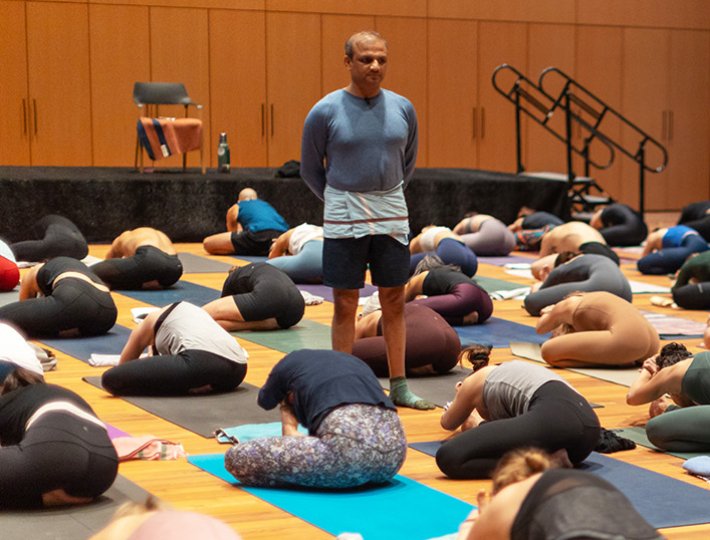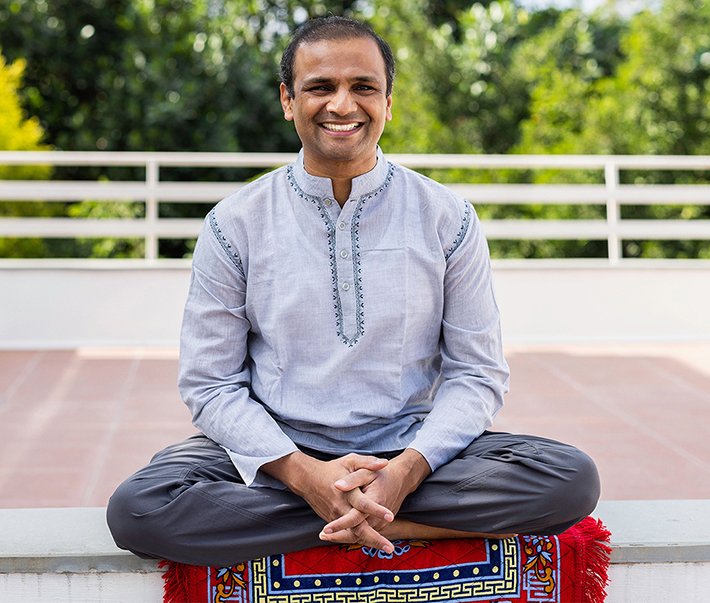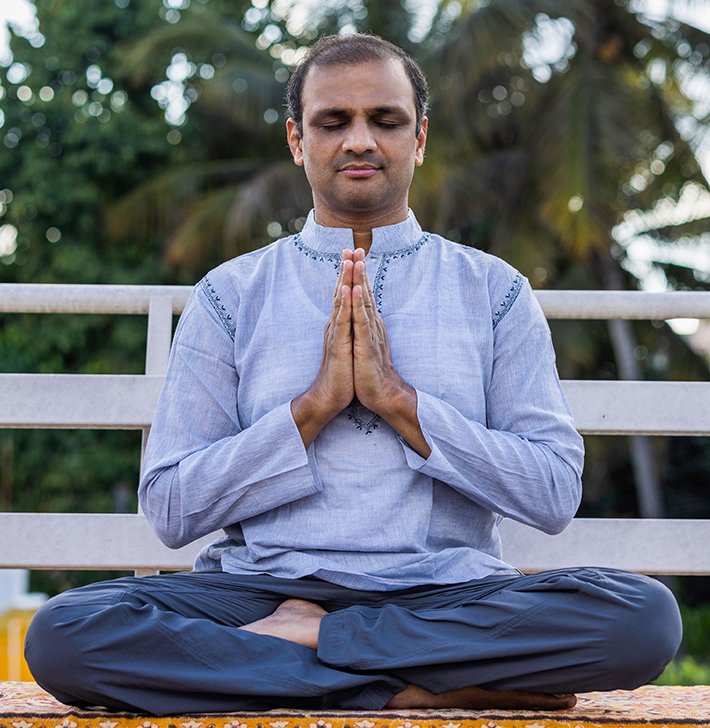There’s a meme on the internet of an iceberg in the ocean. The small tip of the iceberg above the water is labeled “asana”, and the larger, unseen portion beneath the surface is labeled “the rest of yoga”. It’s certainly an apt depiction, based on my experience with the practice.
Like many, I entered the realm of yoga through the gateway of asana practice. What a fantastical entry point! I became mesmerized by the linking of movement with breath, thrilled by the challenges of unfamiliar body positions, obsessed with attaining postures like souvenirs, and coaxed by the calming effects of physical exertion. By the time the “honeymoon” faded, there was no turning back. Instead, the true instruction of yoga began. Practice became the tool with which to explore the depths and shadows of the places I did not want to go.
I ended up writing a children’s book in disguise about this very thing. You see, Young Yogi and the Mind Monsters is actually written for people like me, people who learn best when things are simplified and fun. The book transforms Samadhi Pada—the first chapter of Patanjali’s classic Yoga Sutras—into a whimsical, illustrated story told through the eyes of a little boy called Young Yogi. Patanjali is his friend, and together they have lots to say about the rest of that yoga iceberg. Young Yogi meets all kinds of crazy characters who challenge and enlighten him on his journey of understanding what yoga is really about.
For example, one of the first and most valuable things Patanjali says about suffering is that yoga is the ceasing of the “crazies,” or the turnings of the mind. Once the crazies stop, you can dwell in the truth of your nature. Otherwise, you mistakenly identify with the crazies and their patterns, and you suffer. Young Yogi learns that these “Mind Monsters” are simply self-generated and that his belief in them only enhances their power. Likewise, when he does not believe in them, they cease to exist as a source of suffering.
As the story progresses, Young Yogi continually learns that nothing is as it seems. Bullies become friends, trees become teachers, and his mind becomes a source of liberation.
Ironically, in writing this book, I had to overcome my own Mind Monsters. The same fears, insecurities, and frustrations that plague Young Yogi have plagued me, and, incidentally, they’re many of the same feelings I wanted to avoid on a yoga mat and in life in general. The feeling of not being good enough has been a loud Monster in my life. But being vulnerable, insecure, creatively frozen, and rejected by publishers could not be avoided during this project. Now I see how all these experiences led to growth, self-acceptance, and the availability to face life’s challenges. Young Yogi taught me to love myself anyway, to write anyway, and, most important, to lighten up!
Related: A Meditation for Self-Love and Acceptance from Deepak Chopra
Another big lesson Patanjali shares about practice is to show up and detach or “let it go.” This can obviously be applied to asana practice, but it’s really a principle of life: Show up for each moment and let go for the next. Young Yogi learns this through his righteous surfing guru, Anders, who tells him, “Just, like, practice the right way. A lot. And for, like, a really long time, and without too many breaks. You gotta be total, dude!” Young Yogi learns to show up even when he fails, even when he is fearful and angry or when resistance is strong.
In writing Young Yogi, there were periods of time when I gave up—versions written only to be thrown into the trash, collaborations that failed, and a seemingly endless array of more obstacles to face once the book was actually written. It’s been years in the making. Still, I took the lessons to heart, and I showed up, did my best, and let it go.
Young Yogi finally overcomes the Mind Monsters and learns to live in a state of presence—and with peace of mind and tranquility with what arises—by learning ways to focus his mind or “tame the monsters”. For example, one can chant OM, or focus on the breath, an arising sensation, an inner light, or any desire-less object. Thanks to Patanjali, we have many tools at our disposal.
My own journey with yoga has been a deepening of presence, experiential understanding, and quiet contemplation. I’m indebted to my friend, Young Yogi, who shared so much with me about courage, honesty, and perseverance through the essence of Patanjali’s philosophy. The ceasing of suffering is possible and accessible for anyone, at any age. Coming to know the wisdom of Patanjali through the creation of this book helped me explore the depths beneath the surface, and it is my hope and wish that Young Yogi will do that for you, too.











Comments (0)